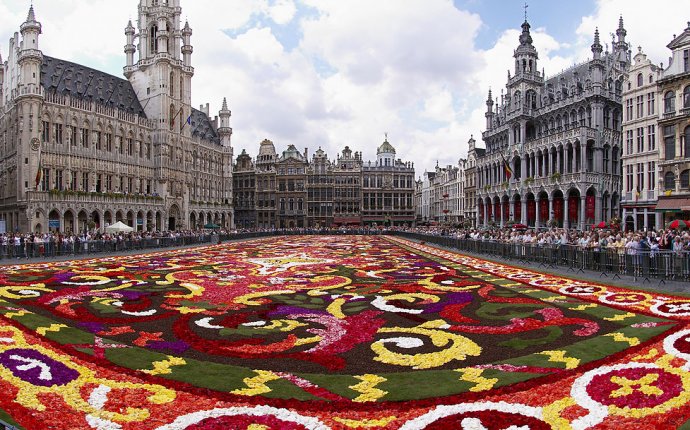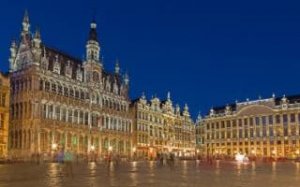
Top Tourism Attractions in Brussels Belgium
 Brussels’s central square is the jewel in its crown, a masterpiece of theatrical architecture Credit: Renta Sedmkov - Fotolia
Brussels’s central square is the jewel in its crown, a masterpiece of theatrical architecture Credit: Renta Sedmkov - Fotolia
You should know, however, that the Grand Place is not quite what it seems: it is in fact a reconstruction, faithfully rebuilt after being flattened in 1695 by French cannons on the orders of Louis XIV. Always open. Admission free.
Musées Royaux des Beaux-Arts
Without making a song and dance about it, this collection is a showcase for the brilliance of Belgian art. It begins with the Flemish “primitives”, the late-medieval pioneers in oil painting, celebrated for their intense attention to detail. It then leads through Pieter Brueghel the Elder and the Younger to Rubens, master of dramatic composition, and Antony van Dyck and Jacob Jordaens. In the late 19th century, Belgium was a centre of Symbolism, producing work of haunting beauty and compelling weirdness; this part of the collection has now been reassembled, and combined with an Art Nouveau, in a separate, adjacent museum called the Musée Fin-de-Siècle. And then came the great surrealist René Magritte, to whom a whole wing of the museum has been devoted. Other great names in the history of art are represented in the collection too, but it is the Belgians who make the deepest impression. (Note that the whole museum is undergoing stage-by-stage refurbishment: the modern art section is currently represented by selected temporary exhibits in a space called the Patio while it awaits relocation to a new museum, the former Citroën garage in Place de l'Yser, due to open in 2020.)
This collection is a showcase for the brilliance of Belgian art Address: 3 Rue de la Régence
Address: 3 Rue de la Régence
Contact: 00 32 2 508 32 11; fine-arts-museum.be
Opening times: Tue-Fri, 10am-5pm, Sat-Sun 11am-6pm, closed Mon
Admission: Fine Arts Museums €8, €6 seniors aged 65 and over; €2 young people aged 6–26; free for children under 6 if accompanied by an adult. Combined entrance with Magritte Museum and Musée Fin-de-Siècle €13; €9 for seniors, €3 for young people. All free on the first Wednesday of every month after 1pm
Musée des Instruments de Musique (MIM)
With a collection of some 7, 000 historical musical instruments to choose from, MIM can put on a show of astonishing range and quality. Three other factors work in its favour: the museum is housed in a beautifully renovated Art Nouveau building, formerly a department store; headphones bring the musical instruments alive; and the view over Brussels from the rooftop restaurant is unparalleled.
With a collection of some 7, 000 historical musical instruments to choose from, MIM can put on a show of astonishing range and qualityAddress: 2 Rue Montagne de la Cour
Contact: 00 32 2 545 01 30; mim.be/en
Opening times: Tue-Fri, 9.30am-5pm; Sat-Sun, 10am-5pm; closed Mon
Admission: €8 adults 26–64 years old; €6 seniors over 65; €2 young people under 26; free for children 0–3 years old. Free on the first Wednesday of every month after 1pm
Horta Museum
Victor Horta (1861-1947) was the pioneer of Art Nouveau architecture, building his first house in this style (Hôtel Tassel) in Brussels in 1893-5. It was called Art Nouveau not just for its innovative, sinuous and organic shapes, but because it was fresh: it did not refer back to any pre-dating architectural style (Gothic, Neo-classical and so forth).
Horta’s houses were complete ensembles, tailored in all details to match the lifestyle of his clients. His own home and office in the southern suburb of St-Gilles, now the Musée Horta, shows this approach at work – a stimulating progression through refreshing shapes, sightlines, textures and spaces. Walks in the vicinity of the museum lead to a number of other Art Nouveau houses, built either side of 1900 as Brussels prospered and expanded.
Address: 23-25 Rue Américaine.
Contact: 00 32 2 543 04 90; hortamuseum.be
Opening times: Tue-Sun, 2pm-5.30pm; closed Mon
Admission: €10 adults, €4-6 seniors; €5 students under 26; €3 school-age children; children under 6 free









